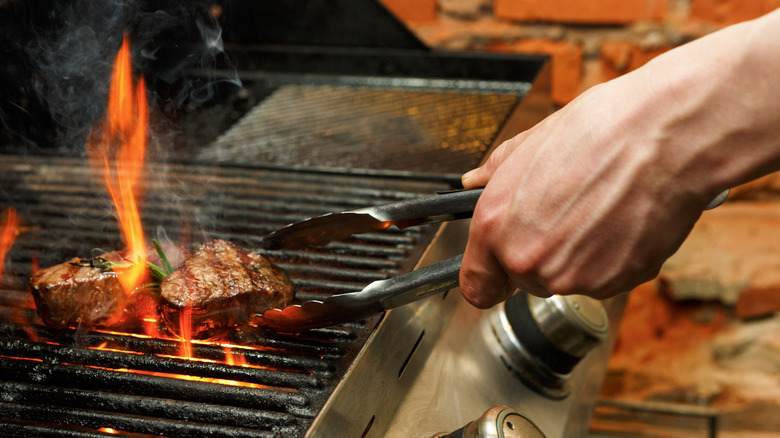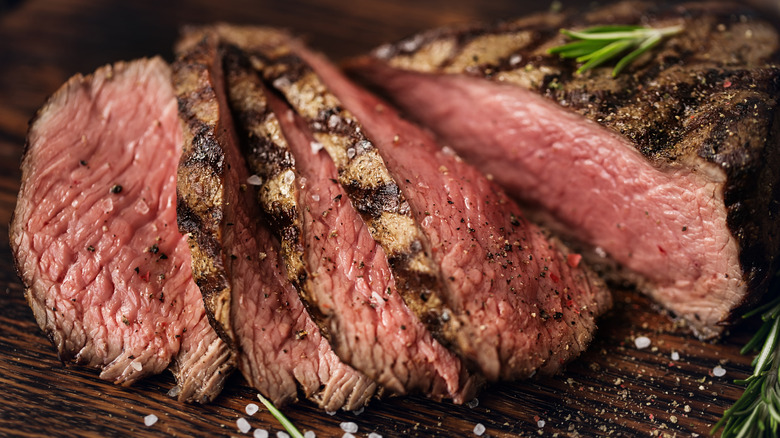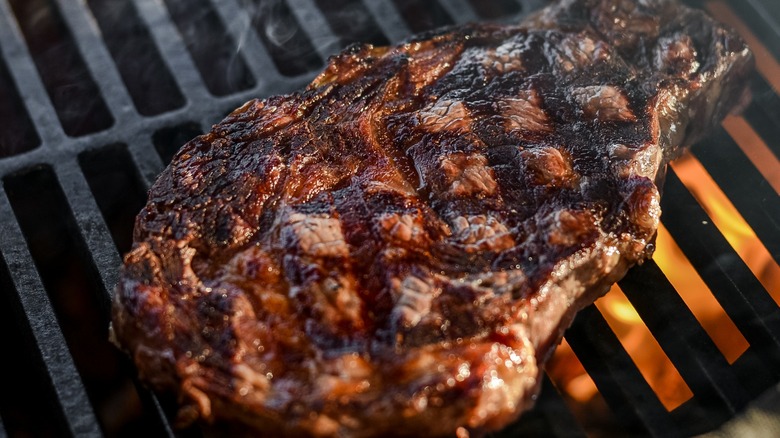The Steak Flipping Myth You Should Unlearn Now
Many people profess that a good steak requires little else than some salt, pepper, and the prowess of someone who knows how to handle a grill. Yet, for something seemingly so simple, there are an awful lot of "rules" in getting a steak just right. It's said that meat should be at room temperature before it's cooked, that it shouldn't be stabbed with a fork, that it should be oiled or remain bone-dry (depending on who you talk to), and that a steak should only be flipped once during cooking. It's this last tip that is quickly becoming known as nothing more than a myth.
The "flip once" theory argues that flipping a steak frequently will keep you from getting a good sear and that the middle part of the meat won't cook properly, compared to the method where you cook one side of the steak for a longer period of time, flip it over and let the steak sit until it's done. Increasingly, though, chefs and home cooks are finding that there are benefits to flipping their steaks multiple times during the cooking process including the fact that it cooks faster and evenly.
We give you permission to flip it more than once
As it turns out, by flipping a steak at a steady pace throughout cooking, the meat maintains a temperature that is neither too high nor too low. The result is meat that cooks very evenly on both sides at a steady pace which ultimately creates a faster cooking time. Some would argue that flipping multiple times could also lead to the meat sticking to the grill. If the heat is high enough when you initially place the steak on the grates, this really shouldn't be a problem.
When you flip your steak only once, you're letting one side of the meat sit on the grill closest to the coals or flames longer. This will quickly cook the outside of the meat and slowly cook the inside. The result is potentially pink meat on the inside with a covering of well-done meat (this is known as the gray band). But if you're going for medium rare, for example, and you want it cooked that way throughout the meat (not just in the center), your chances of obtaining it are much higher when you continuously flip the steak. Basically, the outside is less likely to overcook.
To flip or not to flip
Are there advantages to flipping a steak only once? Yes, and one of them is that it's much easier to get gorgeous grill marks. So, if your goal is to post your seared meat on social media, this might be the method for you. Also, if you're prone to wandering away from the grill to mingle with your guests, this method might give you a little more freedom to do so. It's not that flipping steak once is bad, it's just not the sole way to cook up a really great piece of meat.
In the end, a well cooked steak comes down to even cooking, and flipping it regularly is the best way to ensure this happens. This method is great for all types of beef cuts, like arrachera (or skirt), ribeye, New York strip, and tenderloins. Although some steak cooking rules have proven to be myths, some remain true. Always let your steaks rest after they come off the grill and the best way to determine if the meat is done to your liking is by checking the internal temperature with a calibrated food thermometer.



